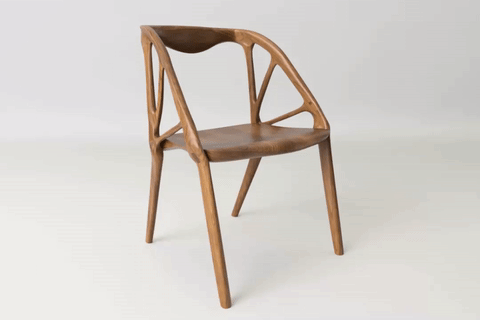
A JOINT EFFORT
Meet Elbo, a striking piece of furniture, to say the least. It’s interesting not only because it looks a bit like a wooden skeleton, but also because of how it was designed: by a computer program.
Autodesk’s generative design CAD system Dreamcatcher “collaborated” with Arthur Harsuvanakit and Brittany Presten to create the unusual chair. First, the duo presented the software with a digital, 3-D model of a chair to use for inspiration. Then they entered a few parameters for their new chair (e.g., how much weight it should be able to support, the ideal seat height, how wide the chair should be, etc.).
As Dreamcatcher started producing potential iterations, the designers would occasionally choose ones they liked, and the software would then start building off of those designs. Eventually, they arrived at Elbo, a chair that is not only stylish, but one that uses 18 percent less material than the initial design and better distributes the weight of the person sitting in it.

MORE THAN JUST FURNITURE
Many people think of computers as little more than a collection of wires and silicon chips, but the incredibly quick data processing power of today’s computers allows them to run calculations that would take a person days, weeks, months, perhaps forever to get through.
The emerging fields of generative design, artificial intelligence, and machine learning open up a whole new way for machines to assist creatives by predicting what they might like before they even see it. Designers like Harsuvanakit and Presten can sit back and watch as systems like Dreamcatcher present them with design possibility after possibility, all meeting the required technical specifications.
This could lead creatives down paths they may have never considered otherwise and not just in fields like furniture design. Generative design, AI, and machine learning software can be used to create other works of art like songs and paintings or even lead to new and better concepts for medical implants, engine parts, buildings, and so much more.